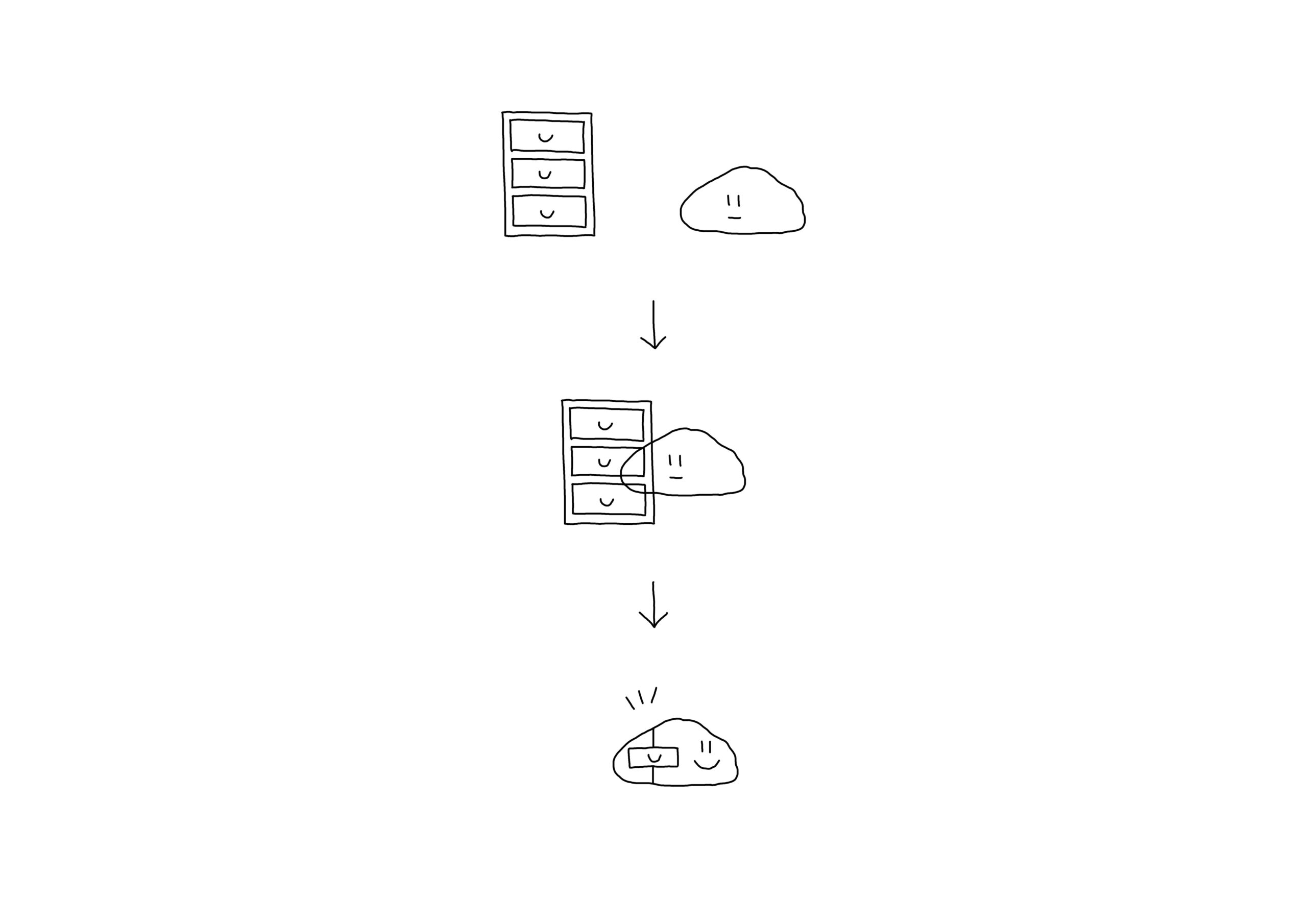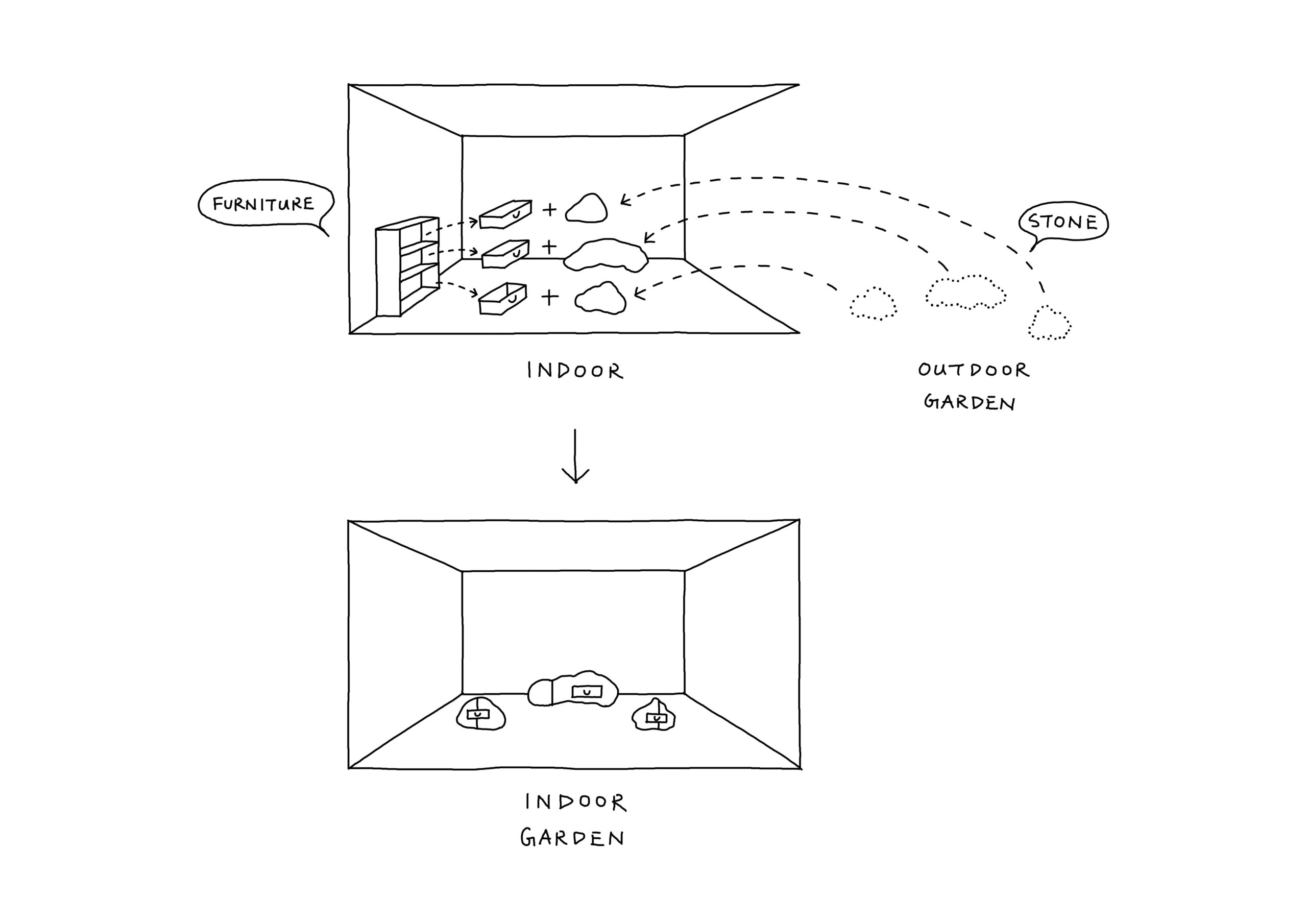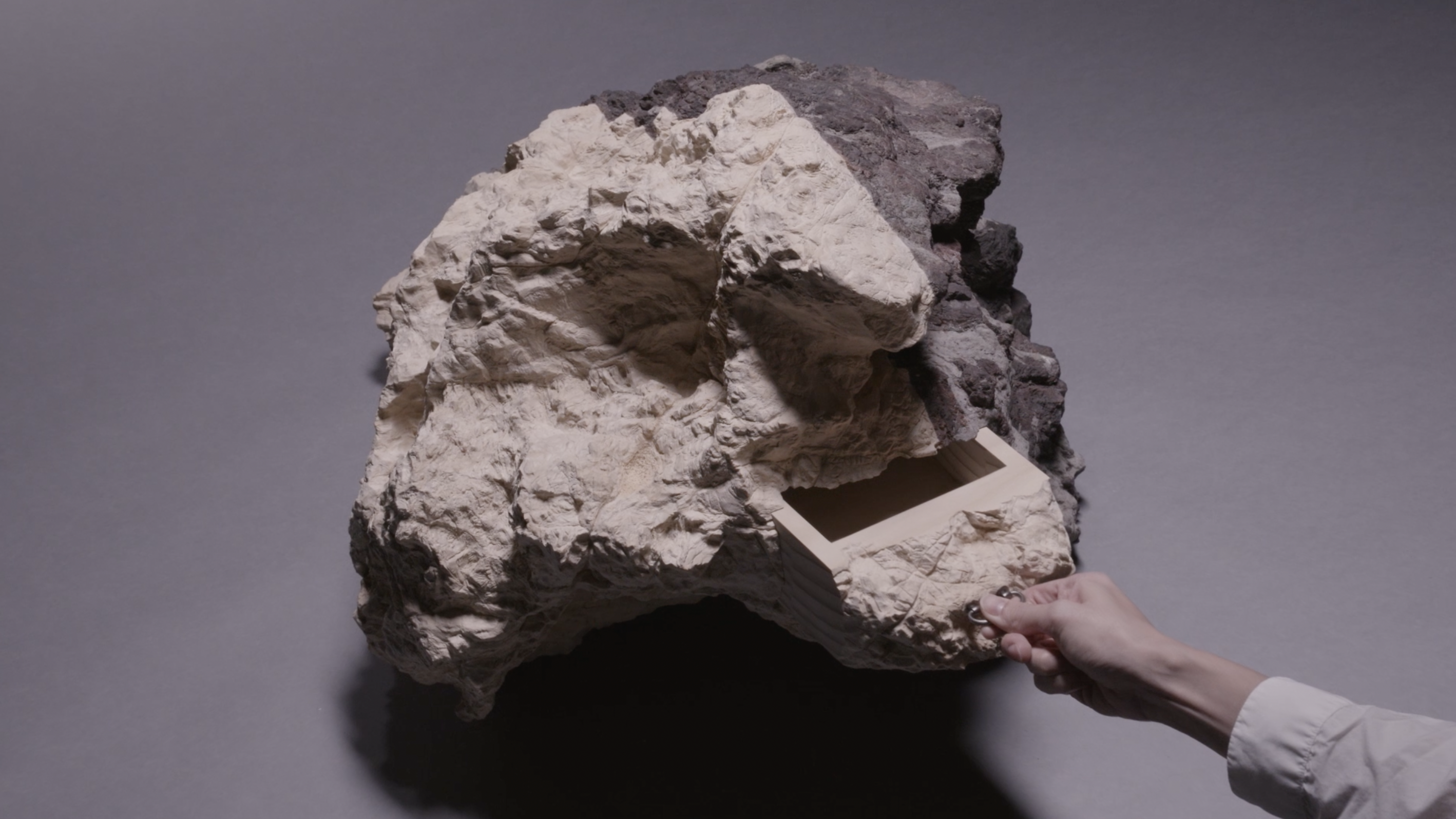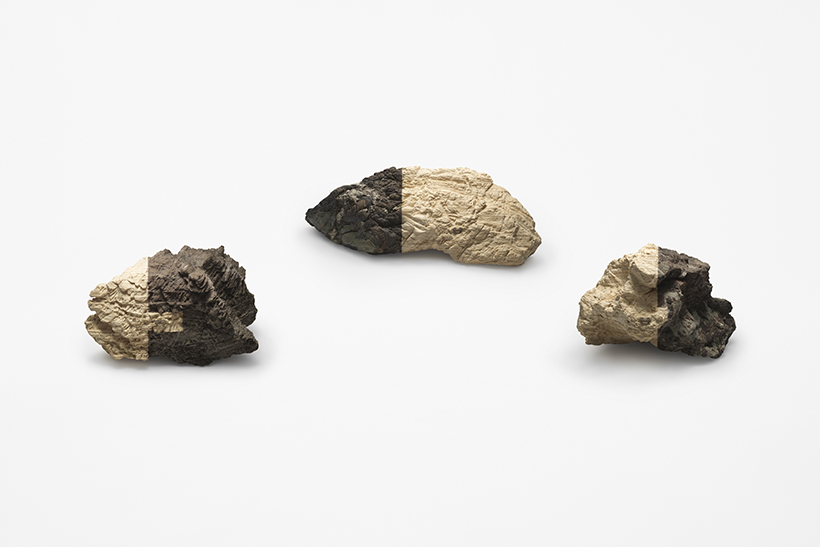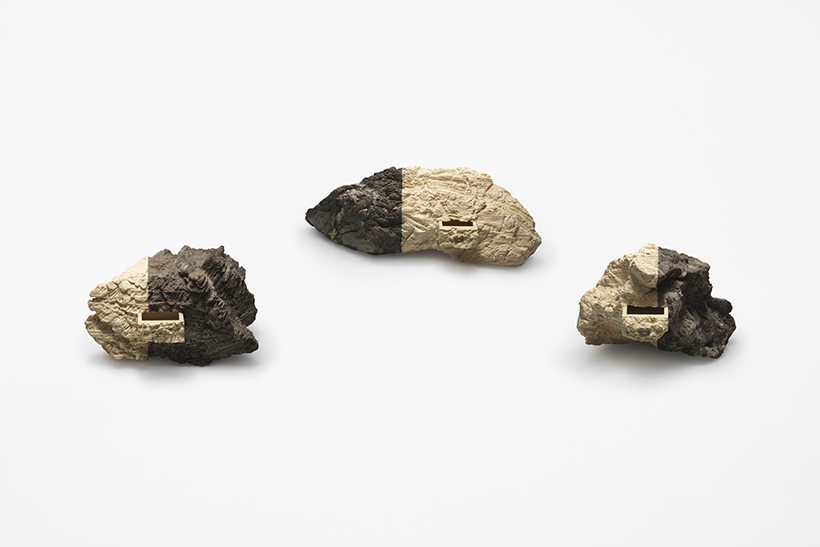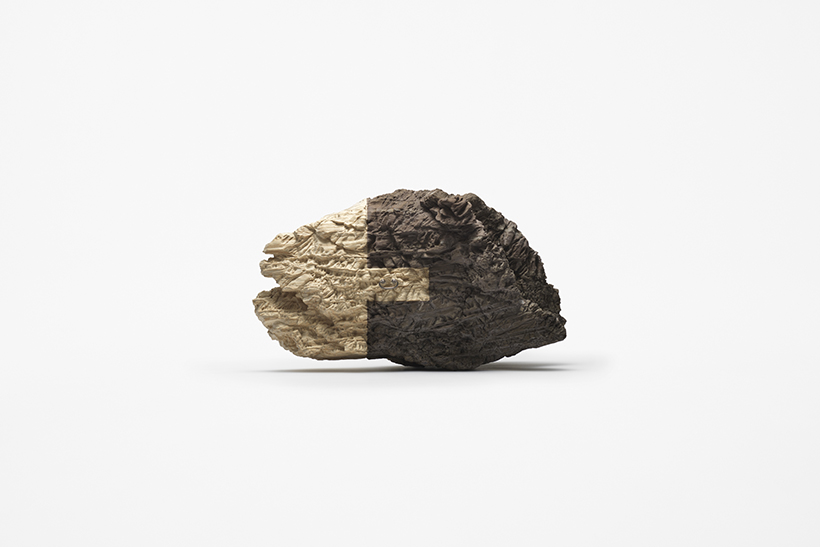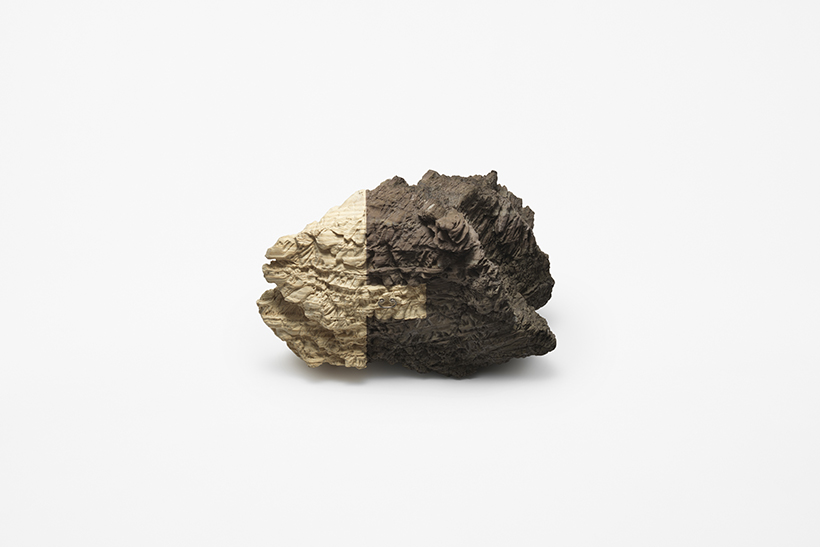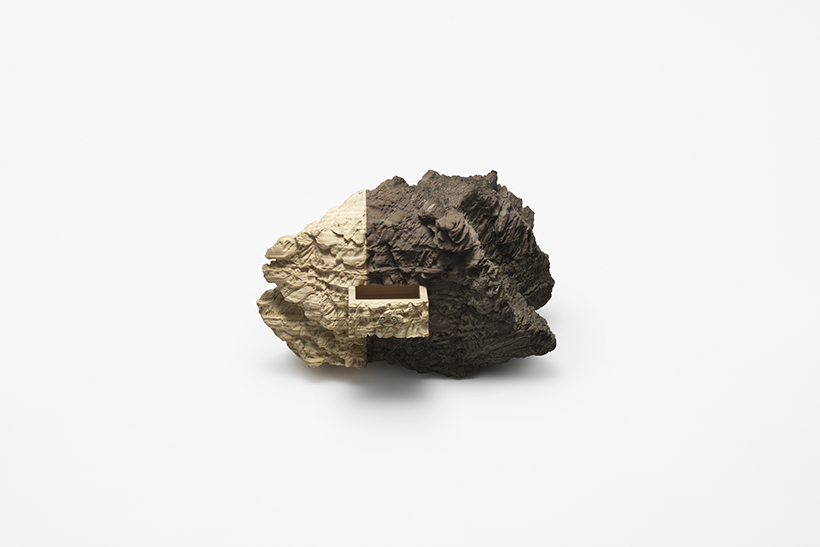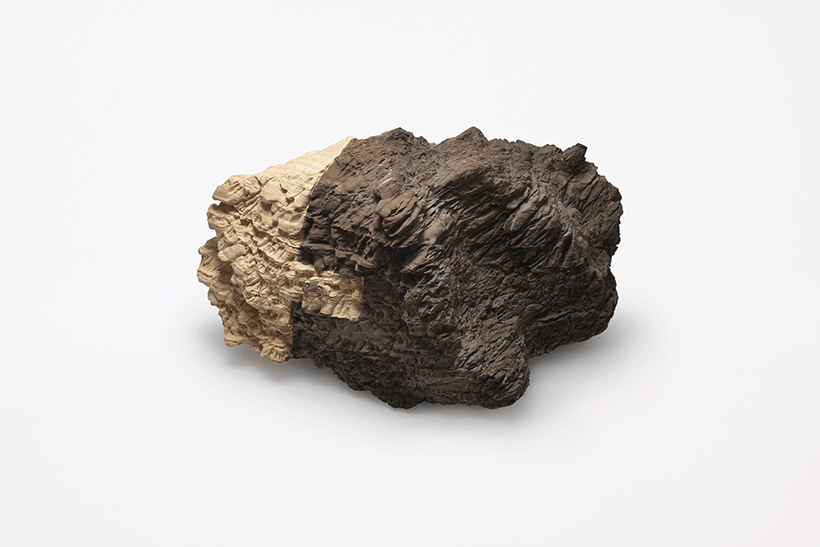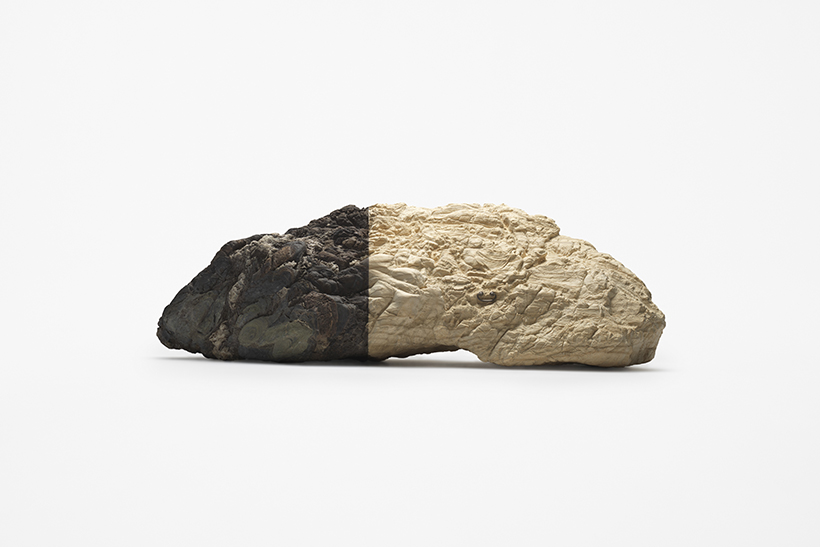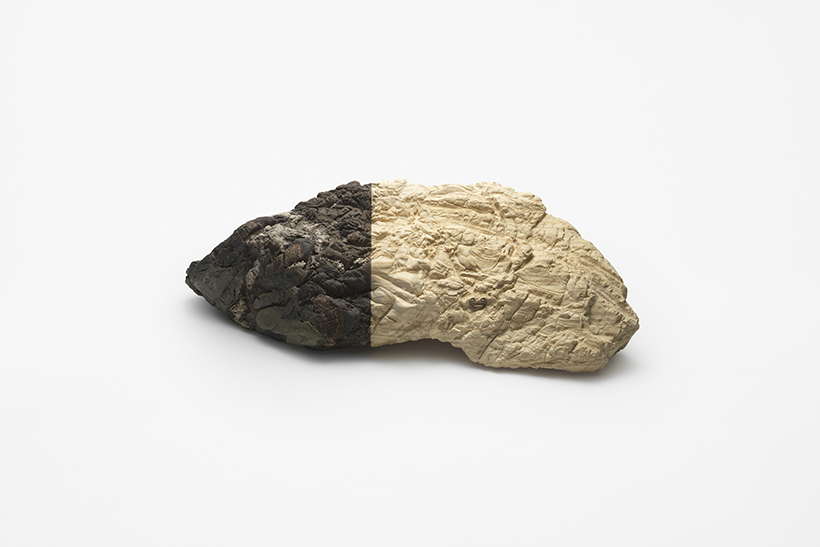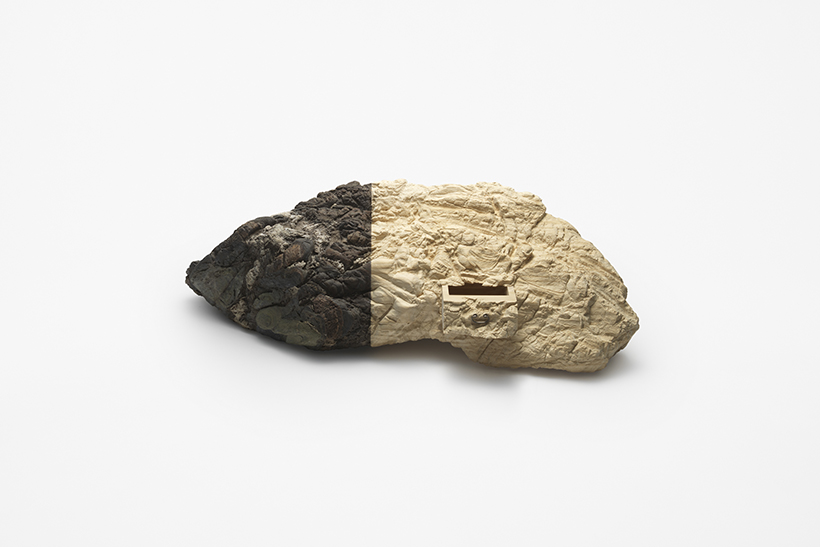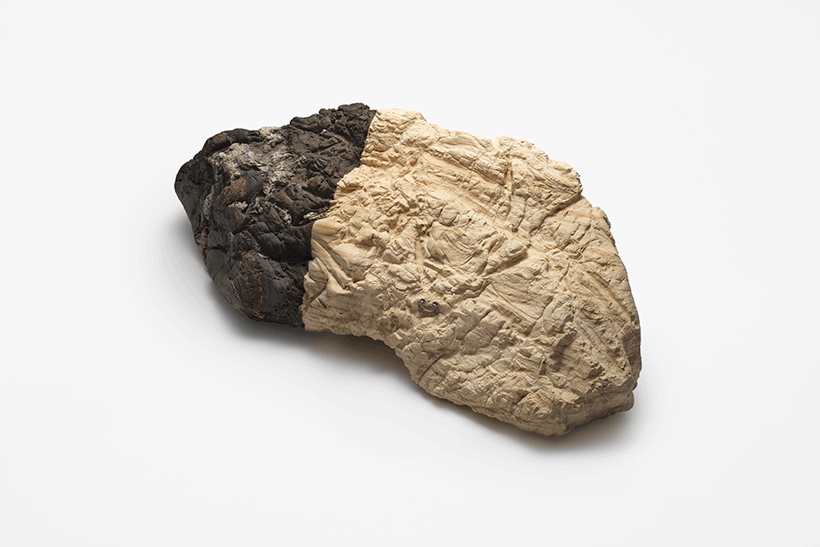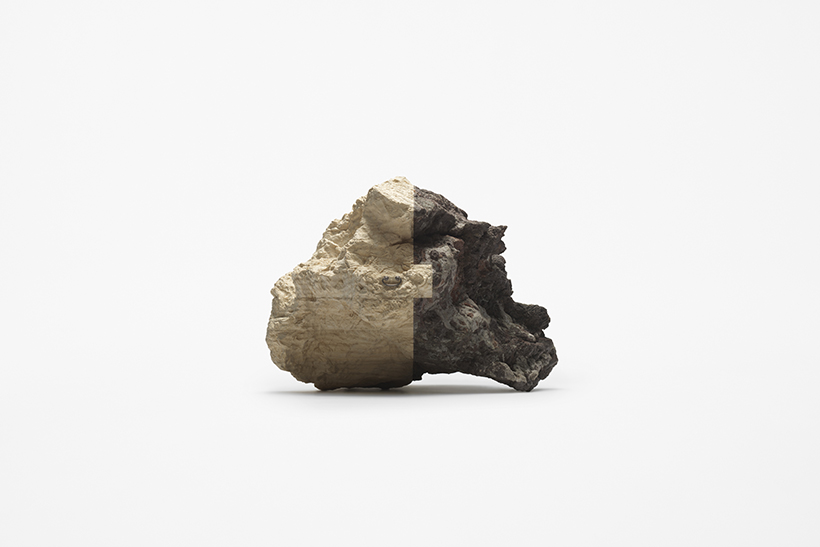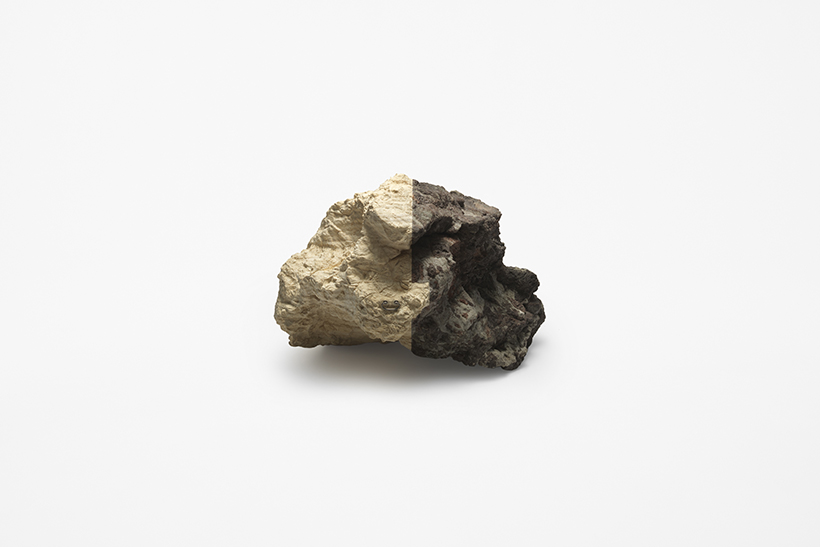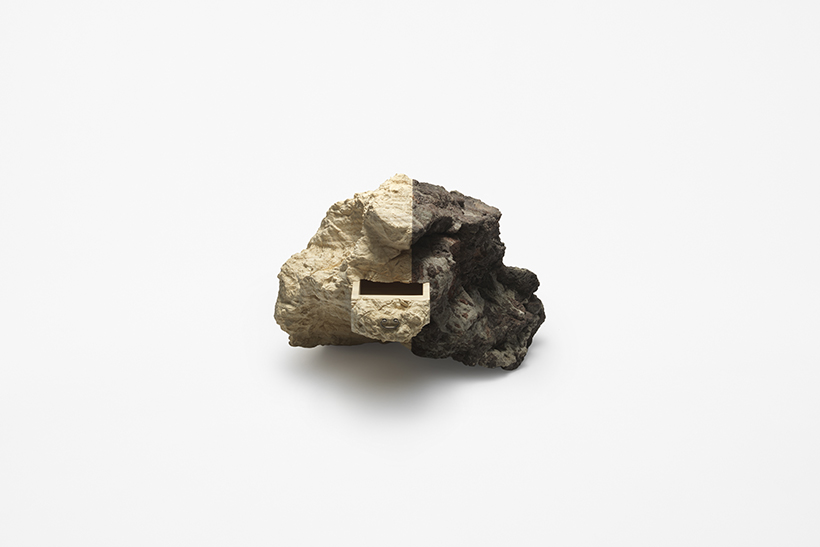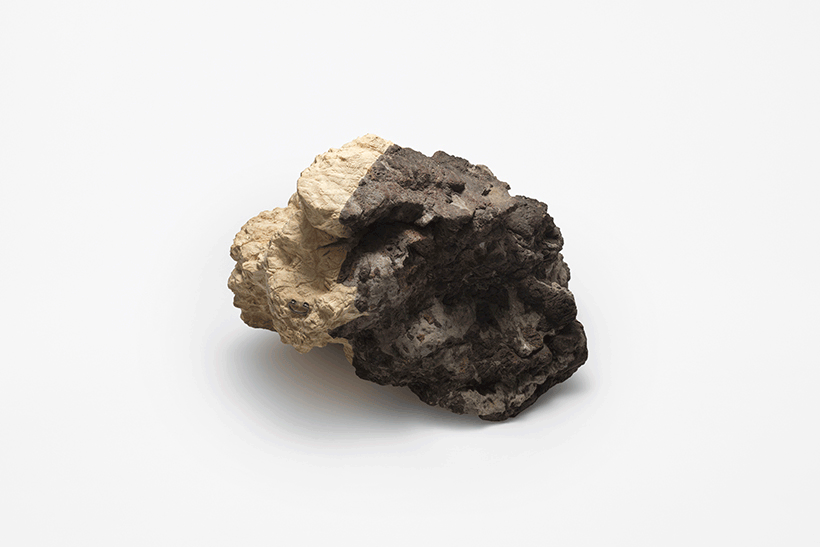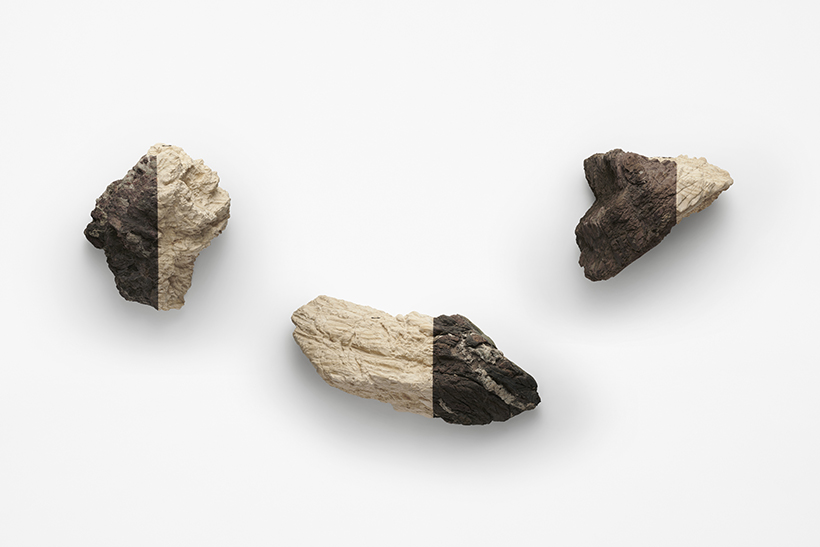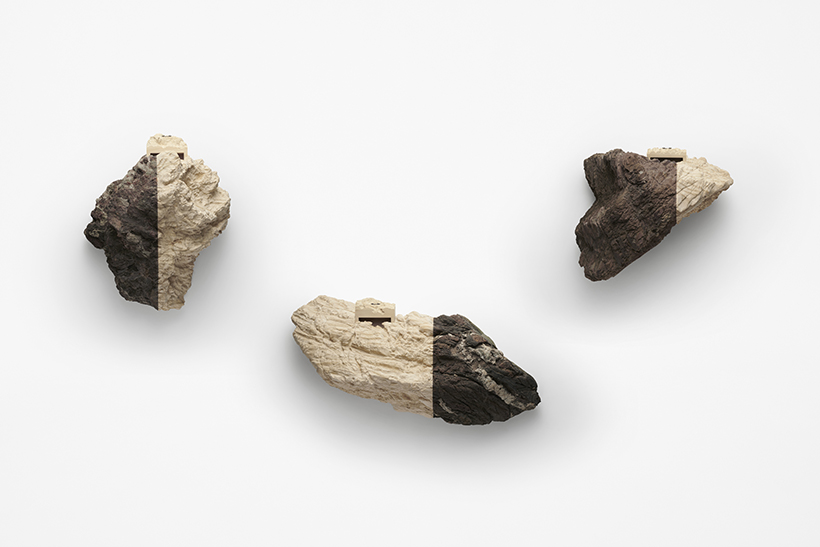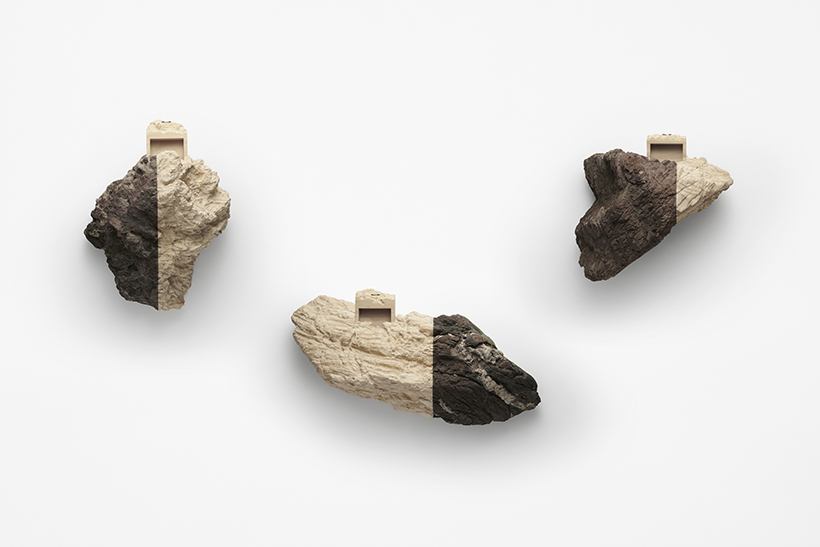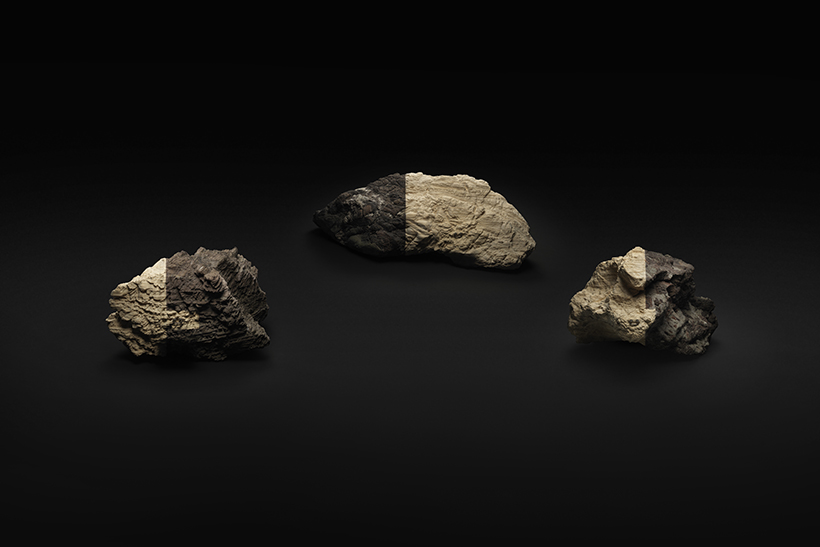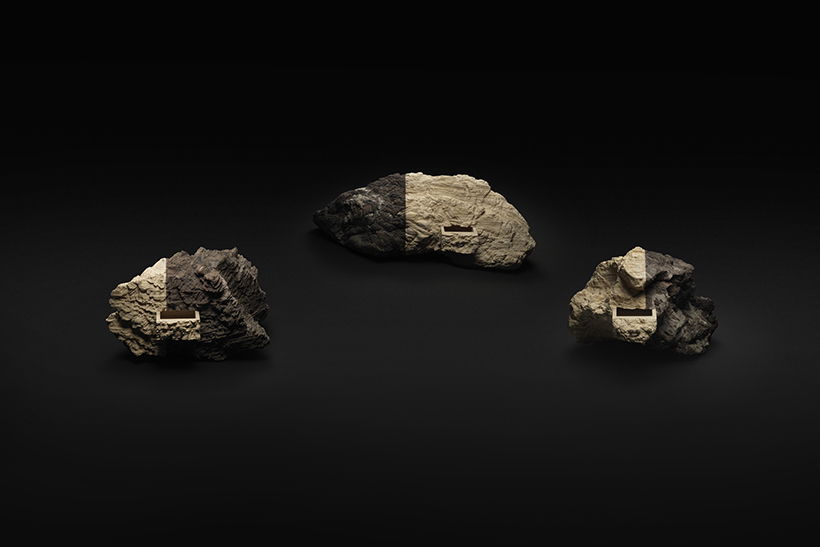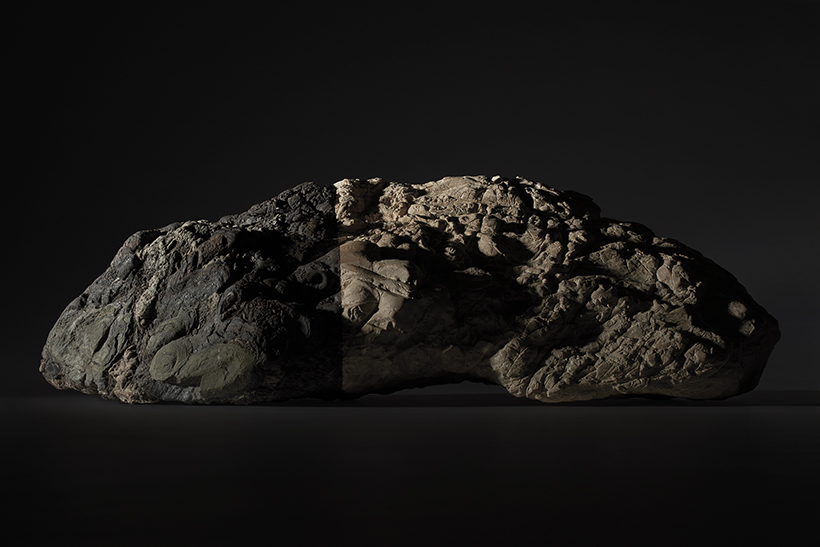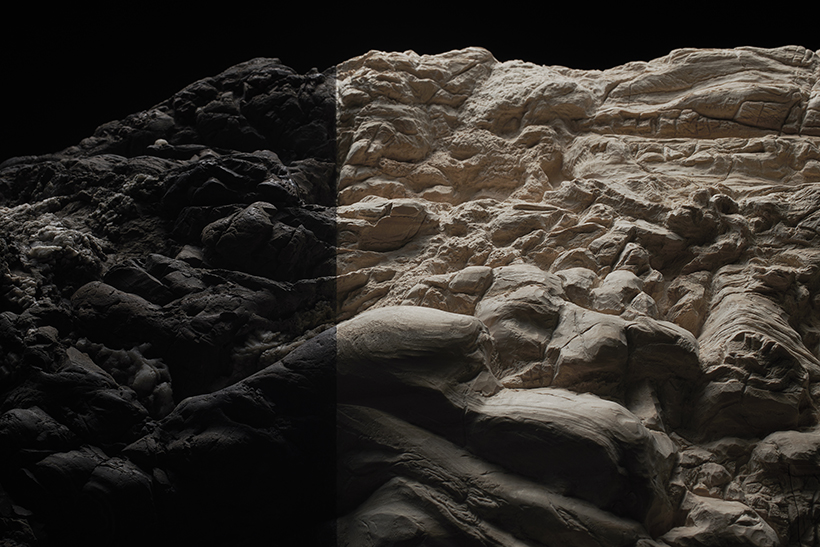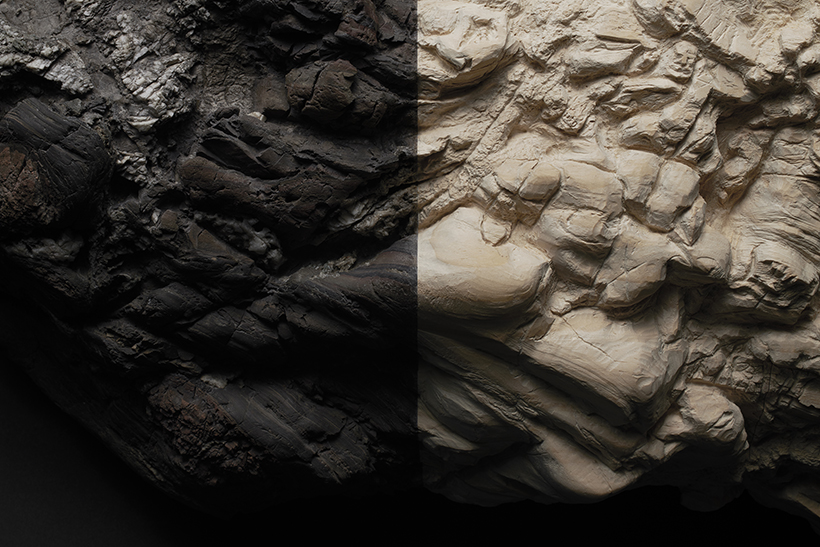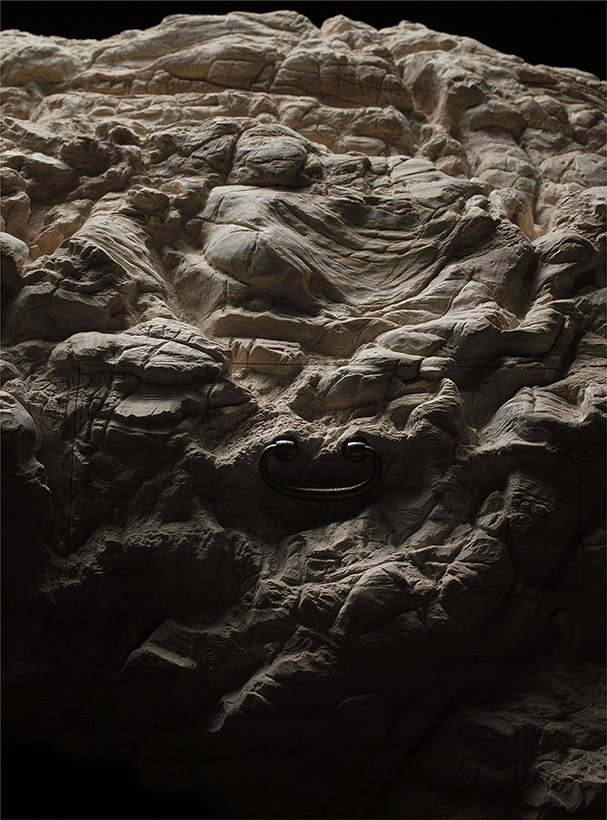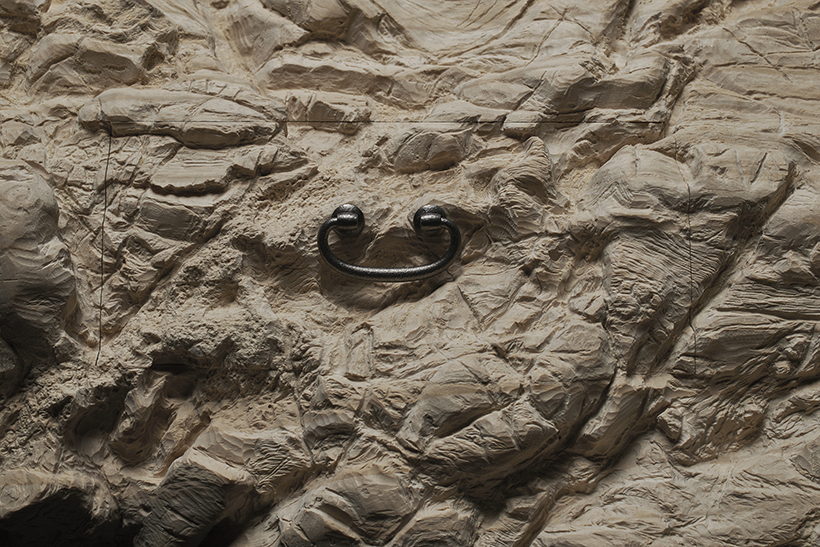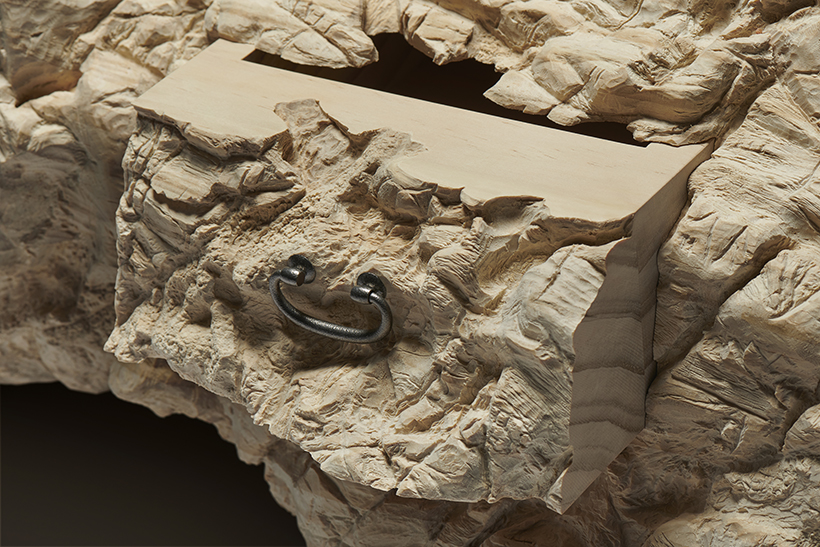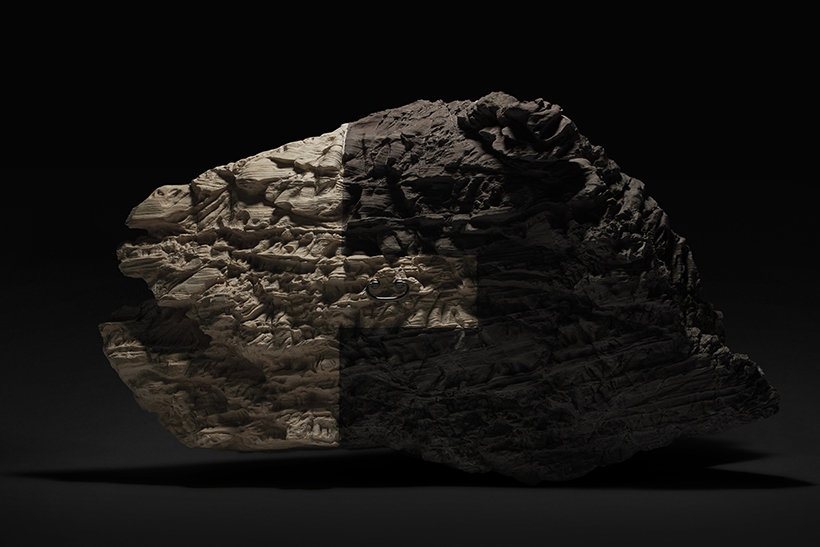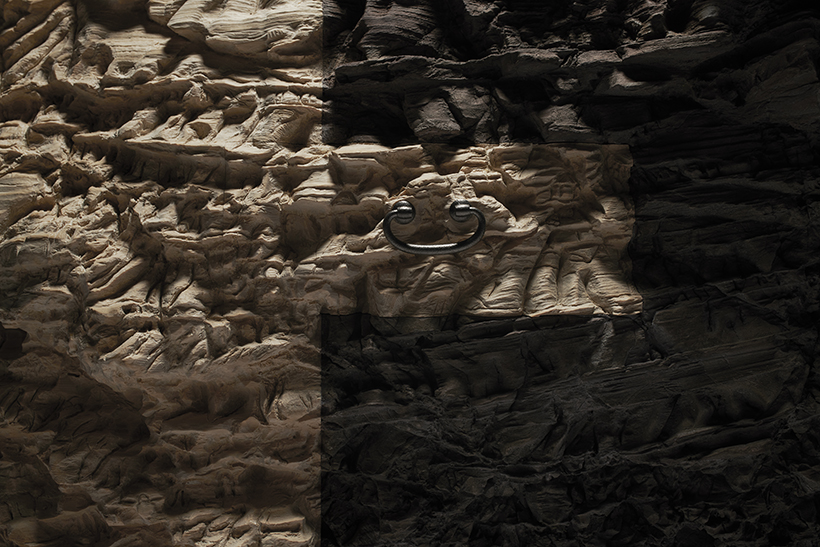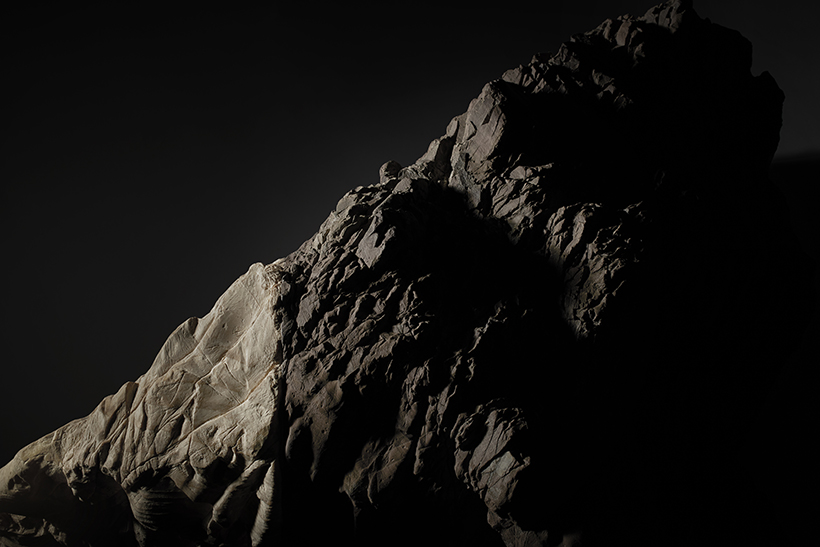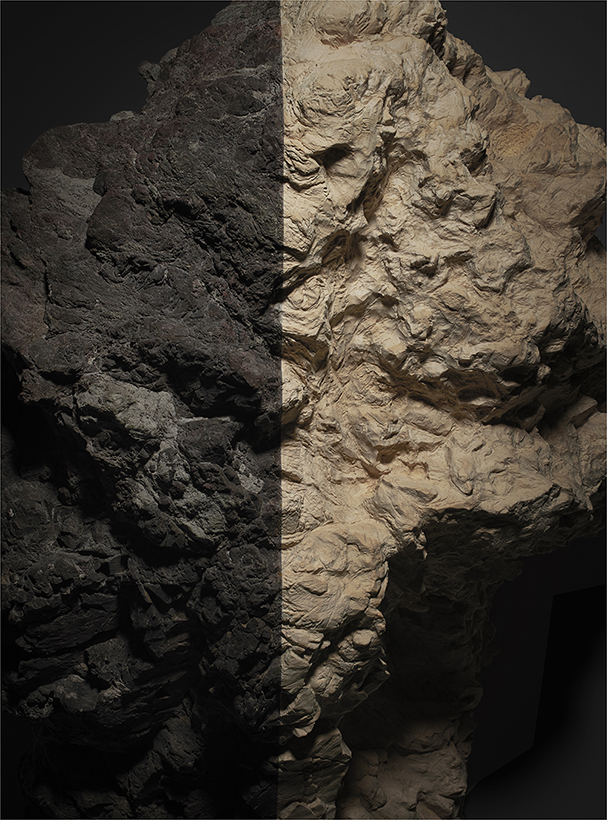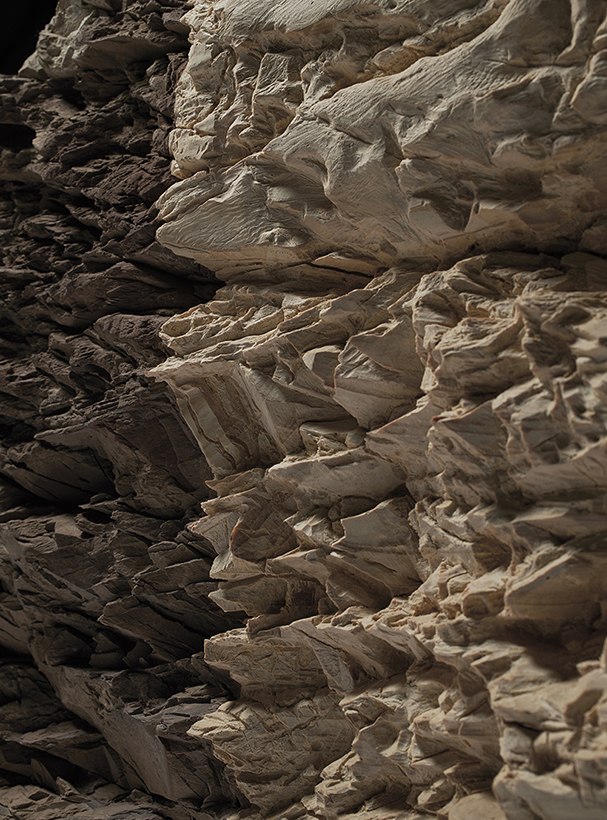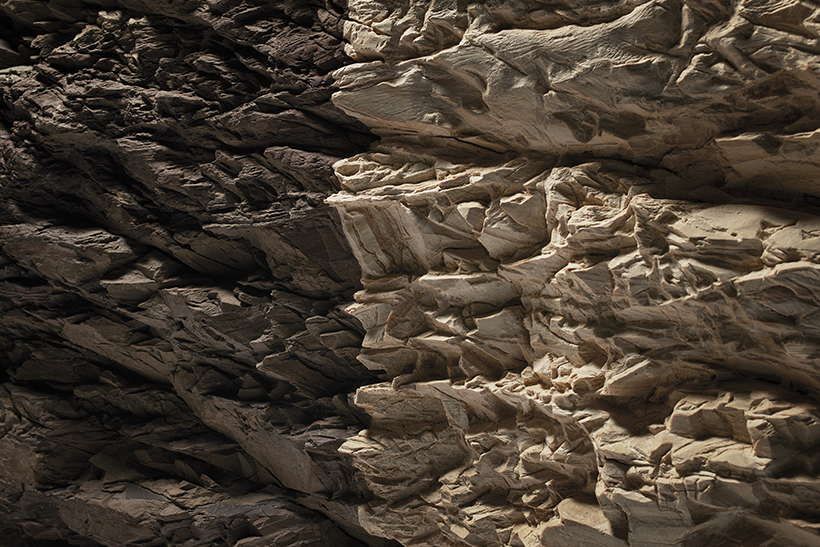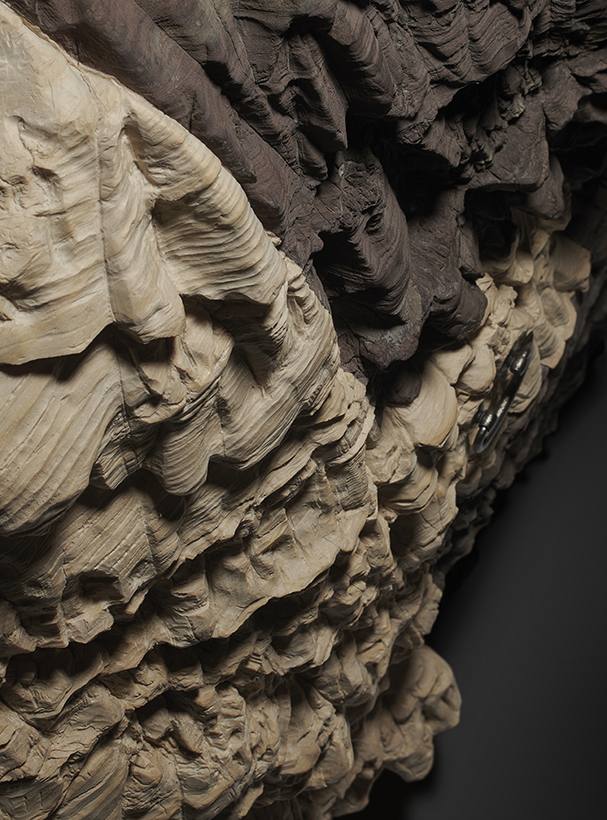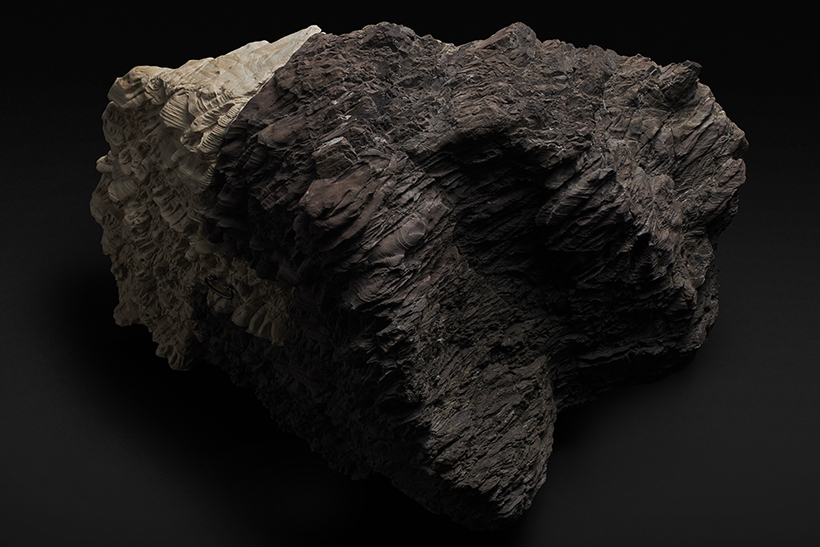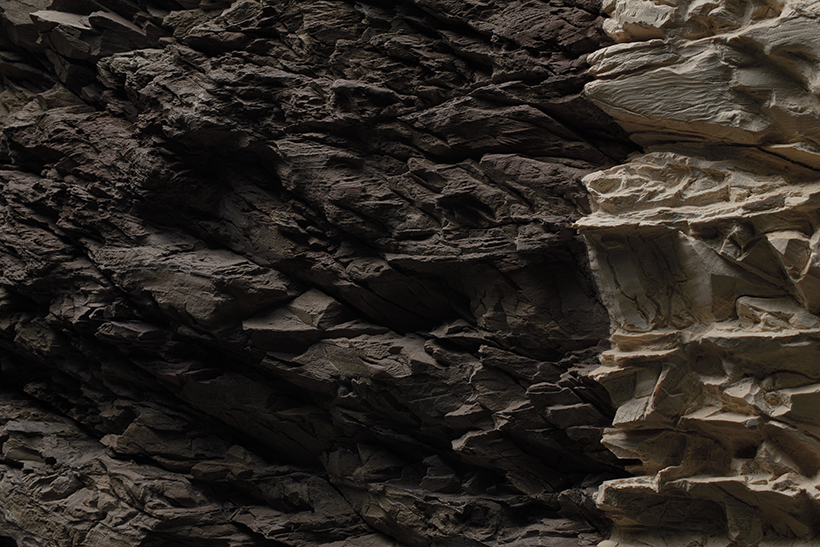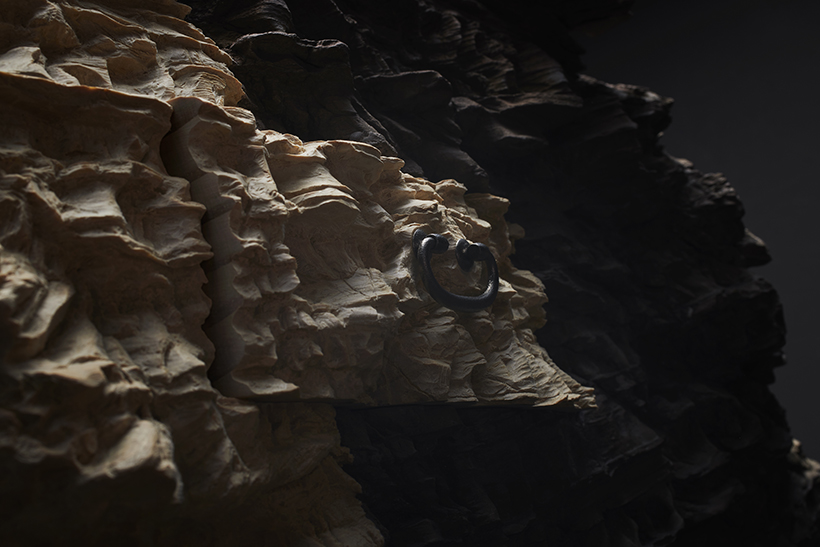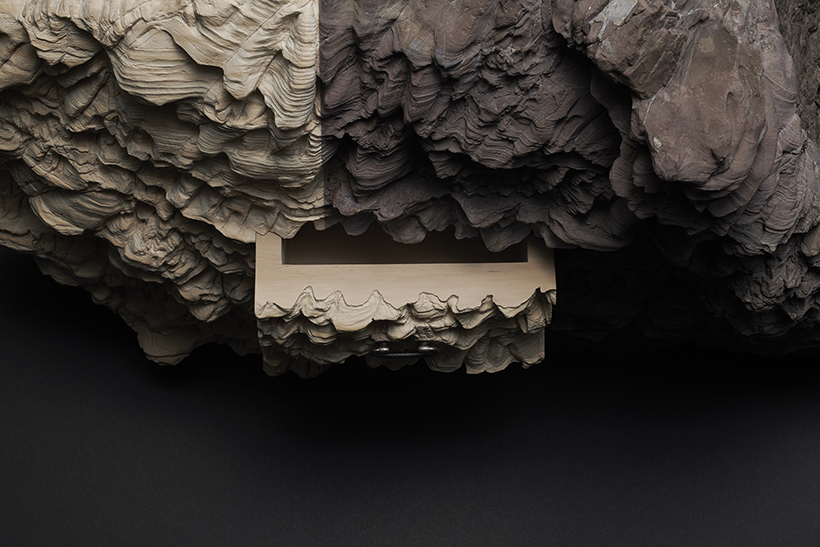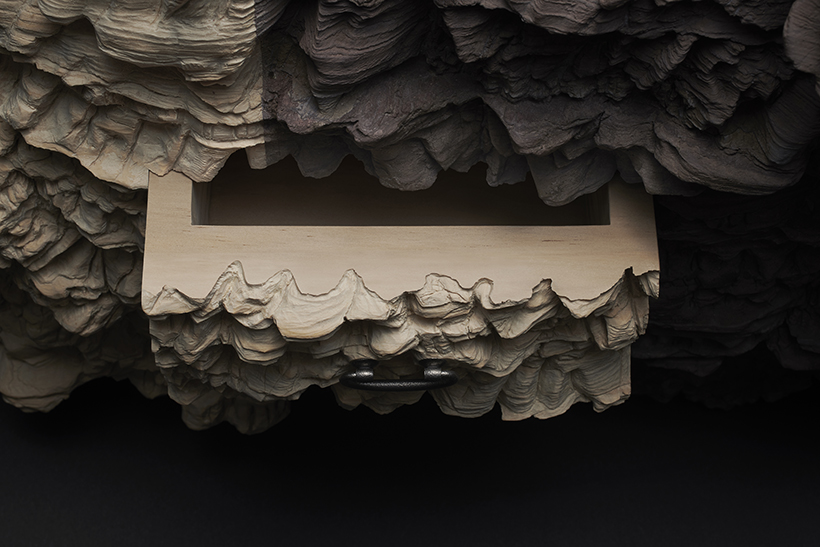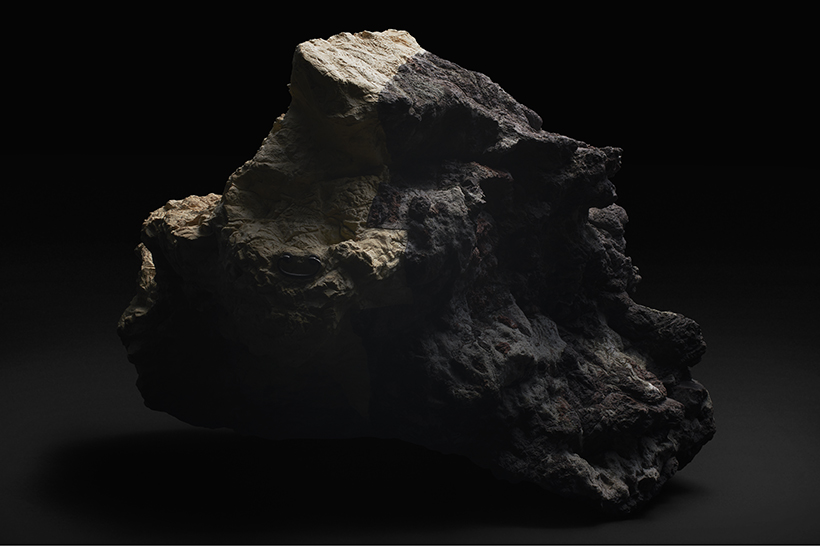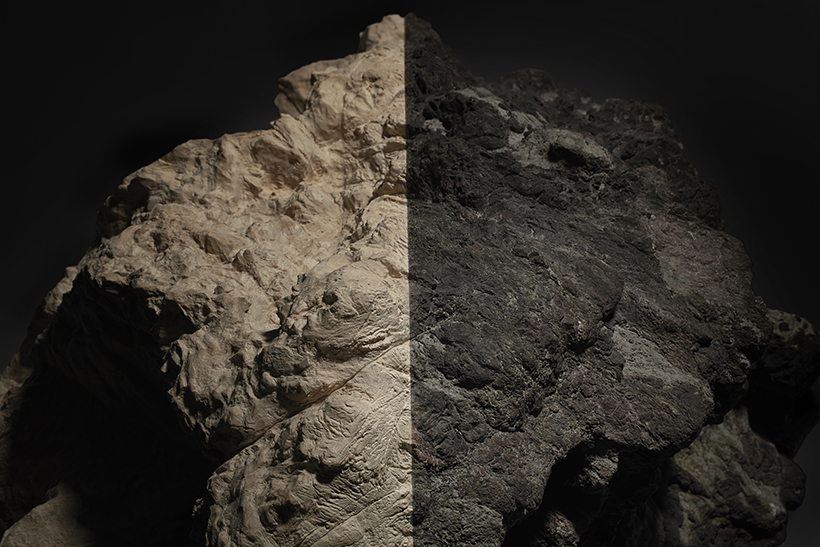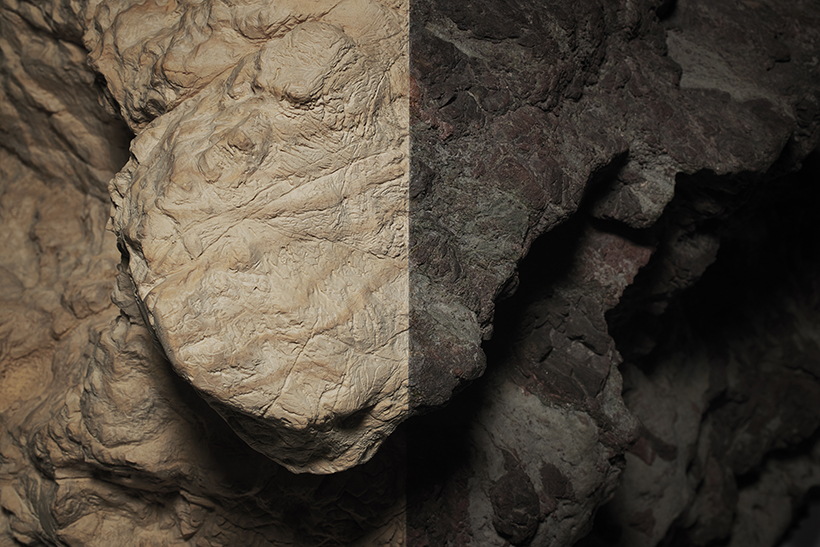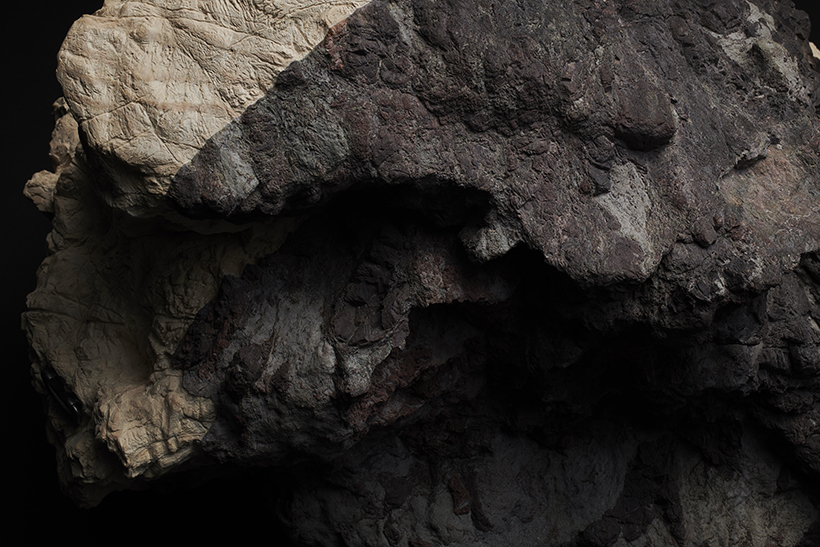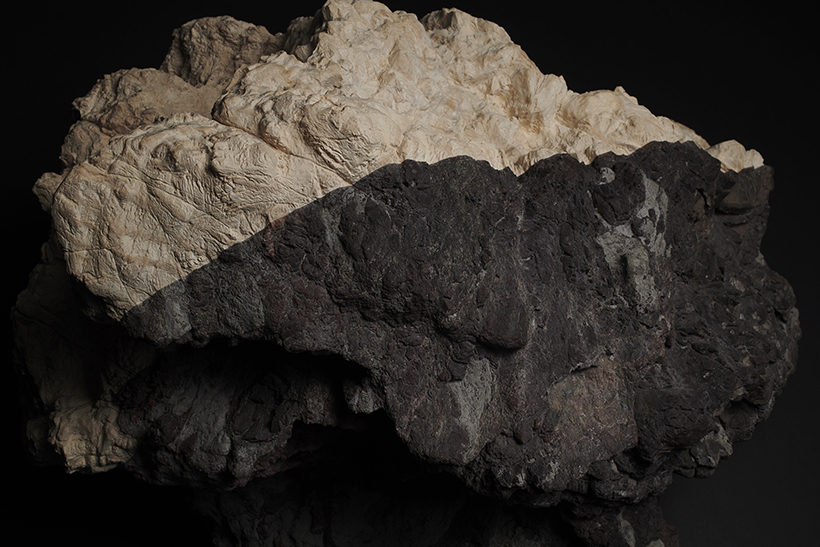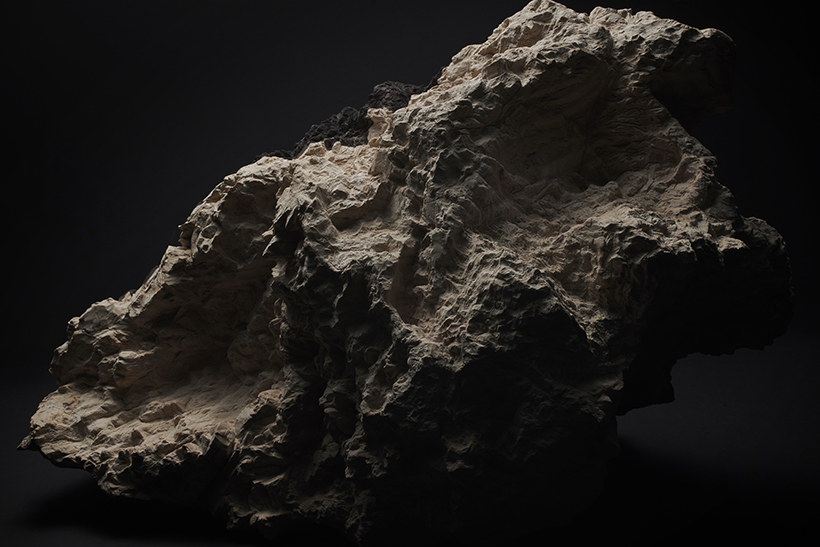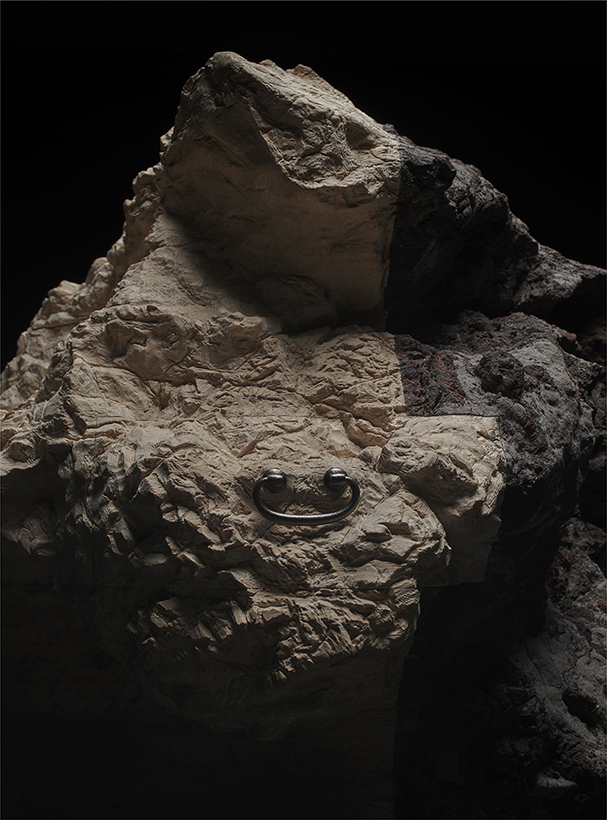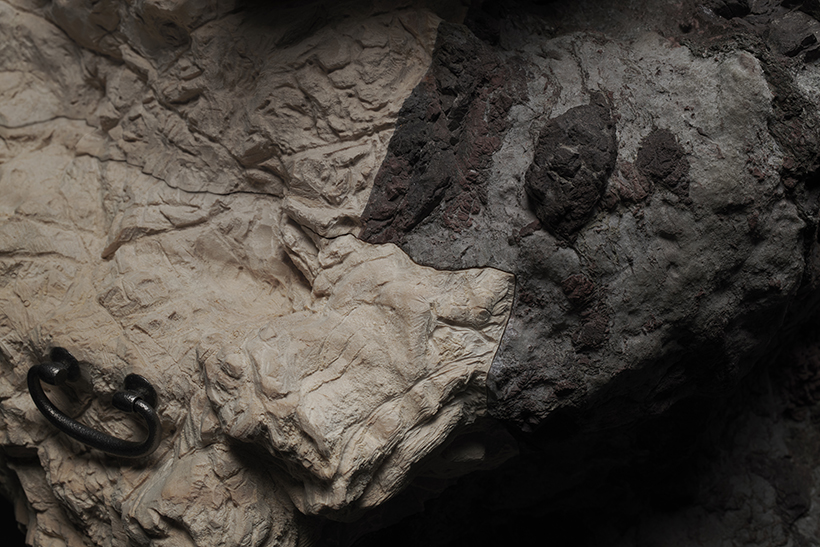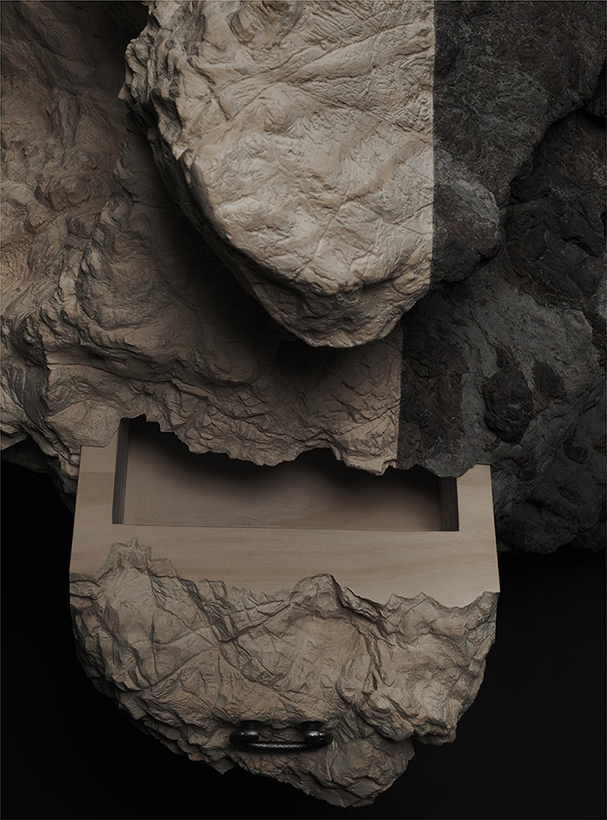ishidansu
For more than 250 years since the Edo period’s Horeki era (1751–1764), generations of gardeners have been designing landscapes under the name of Ogawa Jihei at Kyoto’s Onniwa Ueji. Though heretofore gardens have by necessity been restricted to being enjoyed outside, it was the 12th generation Ogawa Katsuaki’s idea to bring the allure of the garden indoors.
Japanese gardens comprise numerous elements, such as plants, landscape boulders, flowing water, sunlight, and wind, all of which are in constant flux yet maintain a balance. Because there are physical limitations to bringing inside all the complex parts and circumstances of a garden, it was decided the boulders, the slowest-changing component of any garden and therefore its axis, would embody the garden indoors.
A mass of rock in its plain state, however, is alien in an indoor environment, and so to blend it in with its new surroundings, part of the boulder was replaced with wood, a material frequently used in Japanese interiors. A small drawer was also added to bring the boulder in closer proximity to furniture.
First, Ogawa selected three boulders. Kasukabe stone from Kameoka, Kyoto Prefecture, has a rough appearance with alternating layers of red chert and reddish-purple dolomite. The gnarled, marbled pattern of Niyodo stone from the river Niyodogawa in Kochi Prefecture is quite rare in the stone’s natural state. The other Niyodo stone has the look of a volcanic crater partially overrun with lava. Next, the three boulders were 3D scanned to provide data on which to sculpt a block of radiata pine with a five-axis milling machine and the handiwork of sculptors. Shaped by a variety of tools, including chisels, handheld rotary tools, and sandblasters, the pine was made to perfectly replicate the boulders’ shapes, down to the minute irregularities of their surfaces. Meanwhile, the boulders too went under the knife but of a 60-inch medium-diameter circular saw. However, great care was taken to prevent any chips or cracks, or else the entire process would have had to be redone from scratch. Last, the drawers were processed with a disc grinder and an electric chisel and integrated with the stone and wooden parts.
Created thus, the three boulders remained distinct from bon-seki(a traditional art in which rocks are a centerpiece embodying a garden on a tray) and were instead designed into stone that transformed their very rooms into gardens.
